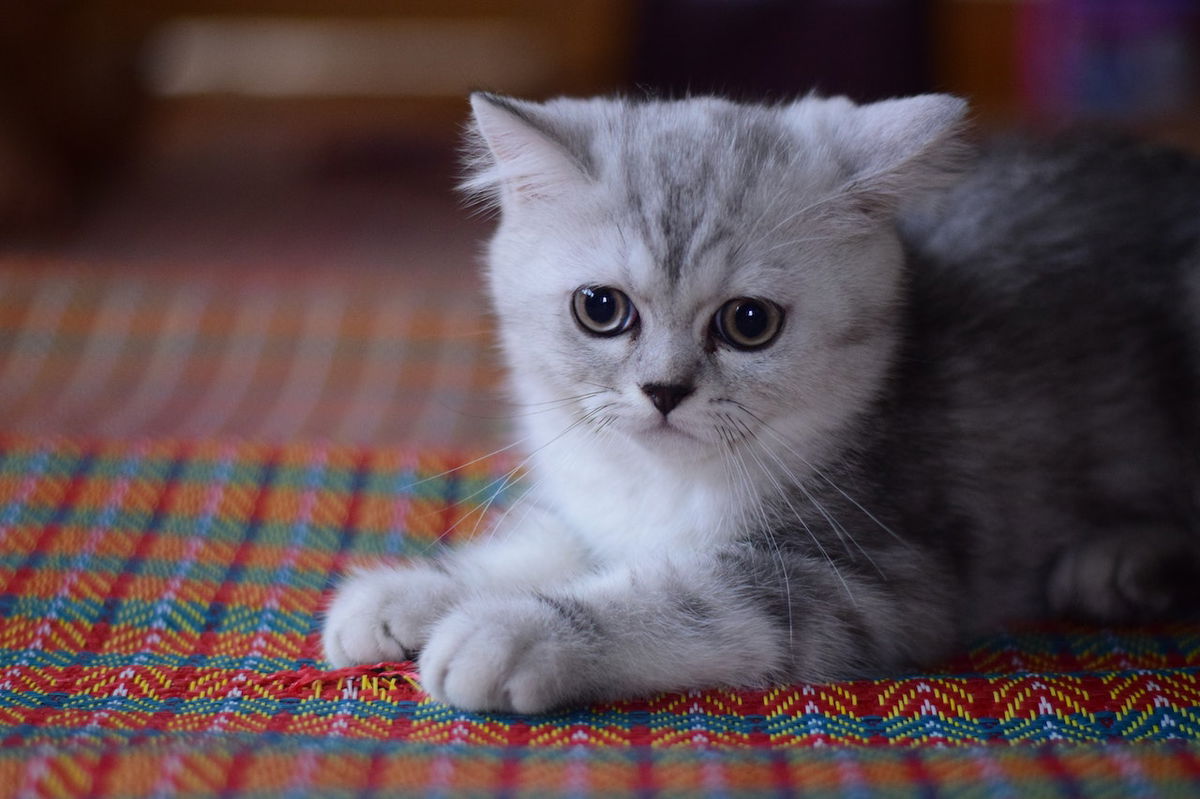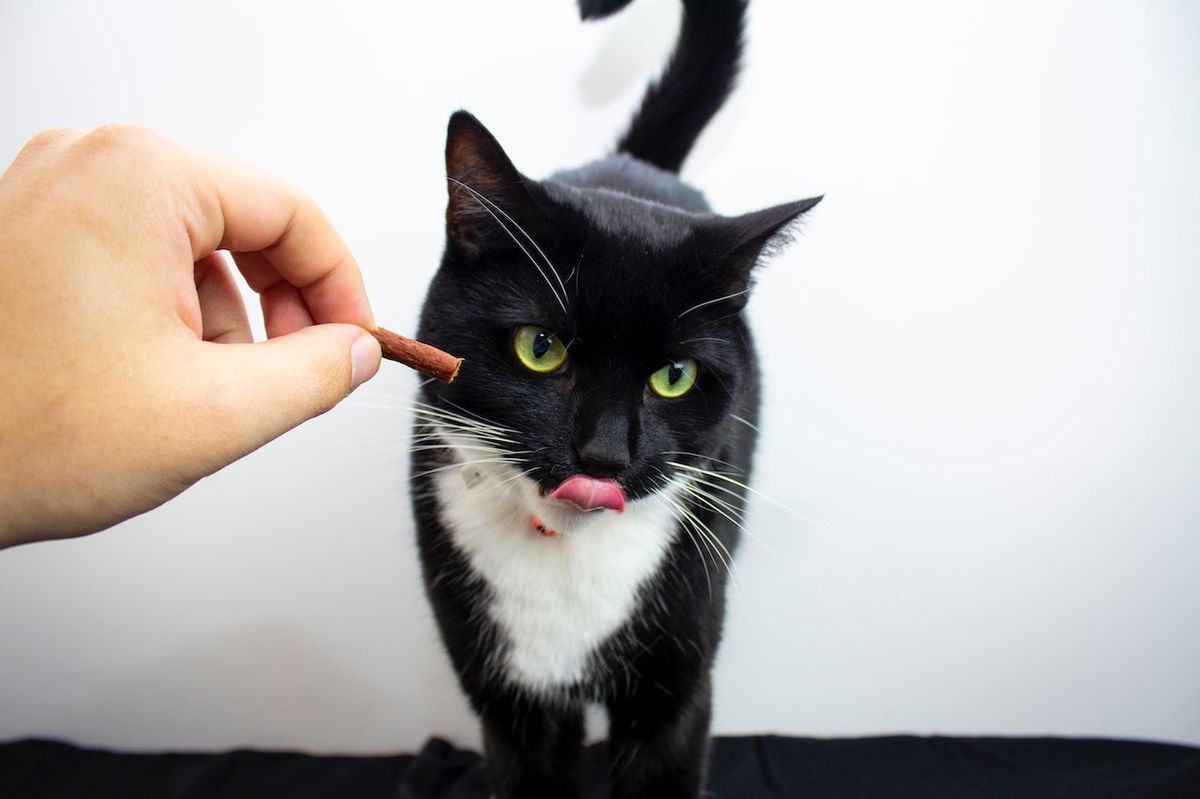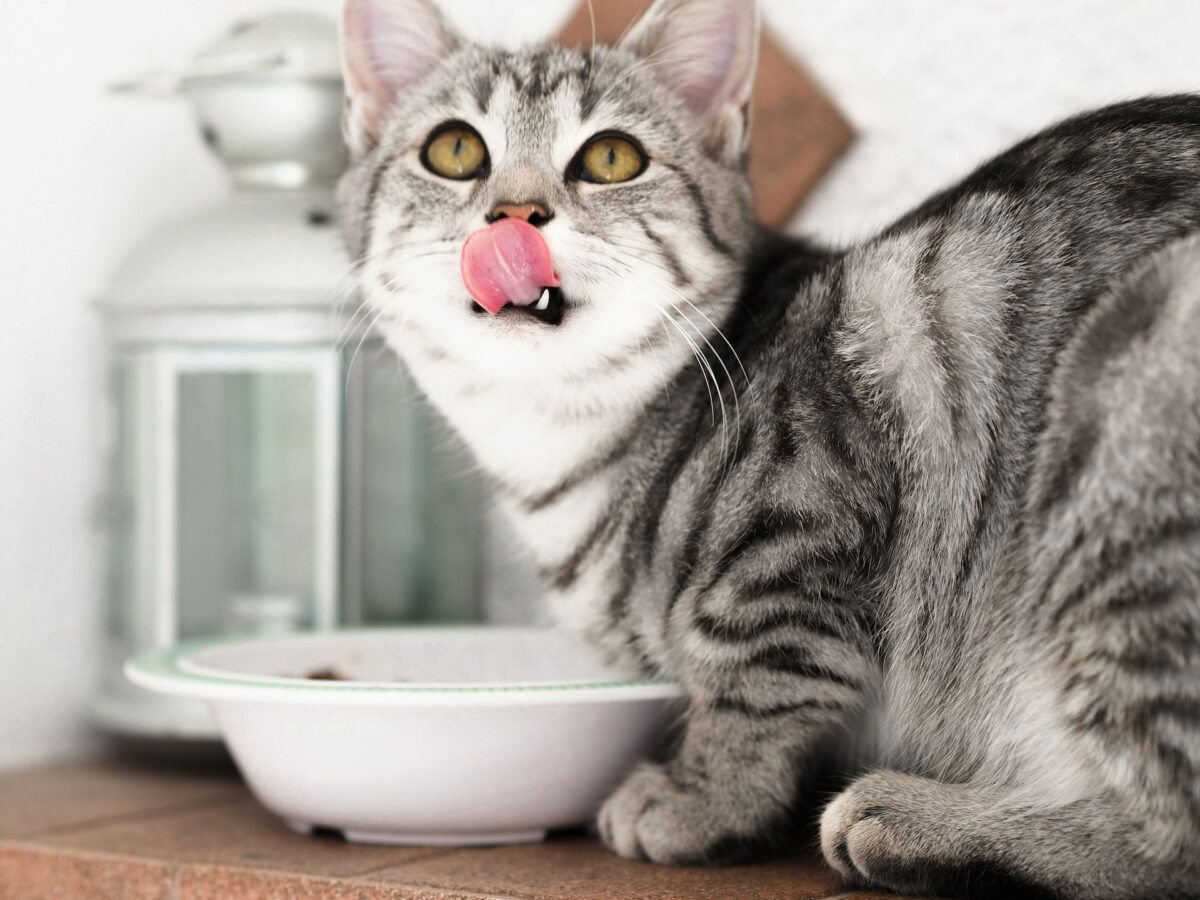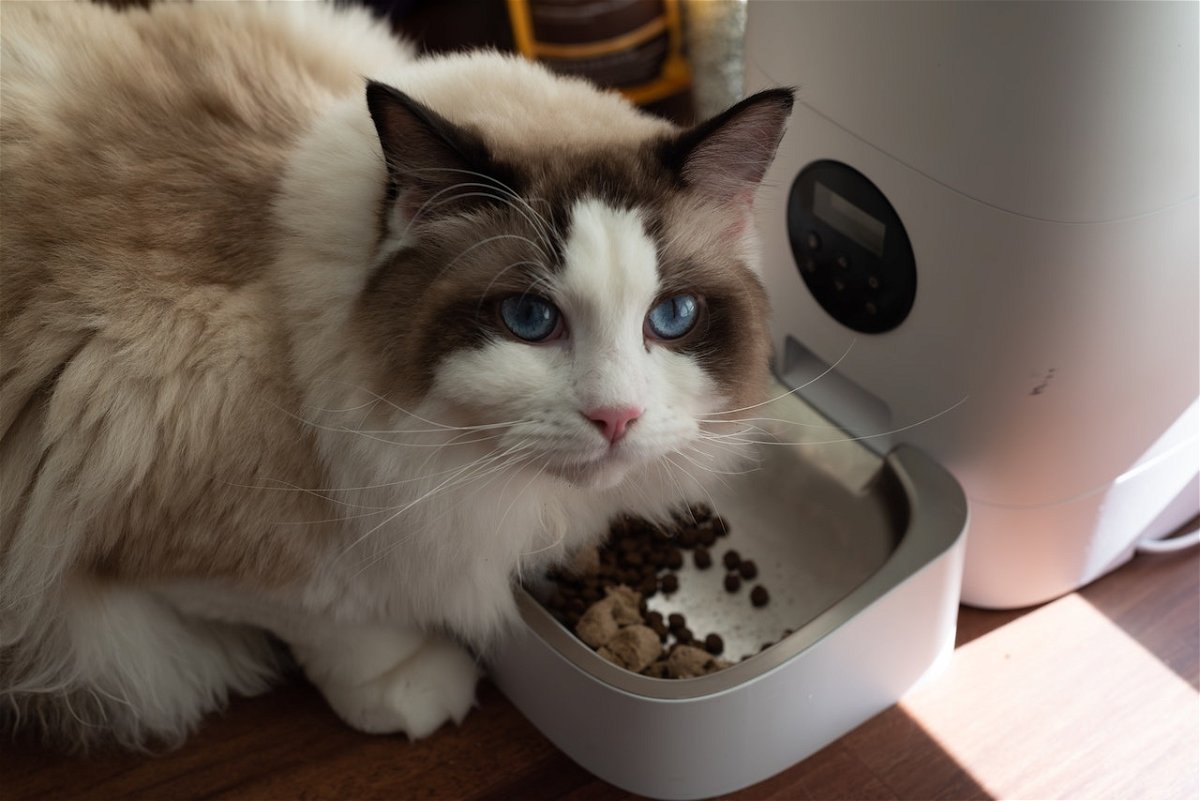We're an affiliate
We hope you love the products we recommend! Just so you know, we may collect a share of sales or other compensation from the links on this page at no additional cost to you. Thank you if you use our links, we really appreciate it!
You must have seen your feline friend pawing or scratching on the area around their food bowl before gobbling down the meal.
So, why do cats scratch around their food?
The primary reasons for this unusual behavior are attached to the feline ancestral lineage.
As you already know, cats are predators and not scavengers. Wildcats had a set of behaviors that made them survive with higher predators.
Keep reading this article as we uncover the possible reasons why your feline may knead the floor around her food bowl before or after having their meal.
Why Do Cats Scratch Around Their Food? 9 Possible Reasons
Cats exhibit intriguing behaviors around their food, driven by their natural instincts. They may try to mask the scent of their meals, a behavior rooted in their wild ancestry where concealing leftovers protected them from other predators.
Also, a mother cat that is driven by protective instincts, may bury food to secure resources for her kittens and safeguard them from potential threats.
A cat’s inclination to clean up their eating space is a reflection of their innate hygiene habits, reminiscent of wild cats removing traces to avoid detection by potential predators.
Understanding these feline behaviors provides insight into their evolutionary adaptations in a domestic setting.
Now that we know the top 3 reasons why cats exhibit this behavior, let’s cover all 9 reasons in more detail.
1. Your cat is trying to mask the food scent
Cats are natural predators, and they only survive in the wild by chasing prey to make a successful catch for a meal.
Even though domesticated felines don’t need to kill to eat, they still have the natural instincts of an obligate carnivore.
Cats would often hunt large prey and eat it in small portions throughout the day or week. They therefore nurtured the habit of hiding leftover meals from other predators in the wild.
Your housecat may still have the natural desire to mask the scent of their favorite meals as a way of hiding it from other pets at home.
2. Your cat is protecting her kittens
Female cats are very protective when caring for their young ones, and what better way to do it than to bury some goodies for them?
Kittens depend on their mother’s milk for the first 8 weeks of their lives, after which they start fending for themselves.

In the wild, it would take time for the growing kittens to master successful hunting skills from their elder siblings or parents.
This made the maternal cat extremely careful in ensuring there’s something left for the young ones to eat, by burying leftover meals.
If your cat is still nursing her kittens, you must have noticed their instincts to bury food have heightened since welcoming the young ones.
You can make your cat mother feel more secure when bringing up her kitten by providing them with a safe space, free from competition for resources with other pets in the house.
In addition to securing food for her kitten, a maternal cat in the wild would hide the scent of dead prey as a way of protecting her young ones from encountering higher predators.
3. Your cat is cleaning the eating space
Cats are highly regarded for their top-notch hygiene and detailed grooming habits. Their innate desire to be clean goes beyond personal grooming, to their immediate surroundings.
Your cat may paw or pick up fallen foods from their eating area as a way of maintaining cleanliness and removing evidence.
This is a natural habit for wild cats who would clean up all messes after eating as a way of removing traces for potential predators.
4. You gave them plenty of food
If your cat left lots of food in their bowl after eating, then there is a high chance you provided too much quantity for one session.
As we mentioned above, maternal cats have a natural desire to hide leftover meals for their young ones.
But in this case, most adult cats may try to put leftover foods, especially wet ones, out of sight since they don’t need it anymore.
This is because wet foods do not hold the moisture for too long and they can easily go bad, making them unappealing for finicky cats.
‘Disposing of’ the excess meal is a subtle way your feline friend tells you they won’t be having any of it later.
Your best solution is to ensure that you provide well-portioned meals to your cat in every feeding session.
Adding too much food can lead to wastage over and above the risk of overfeeding which puts your feline friend at a higher risk of becoming overweight.
5. Your cat doesn’t like the food
Cat owners know how finicky their furry friends can be when it comes to eating.
Some cats may avoid touching food they don’t like, but others would want to make a clear statement about their disappointment with particular meals.
The statement can be made in several ways including scratching on the carpet area around the food bowl, playing with the bowl, inspecting the food, or hoovering their nose around the meal.

Your cat is likely to express dissatisfaction with meals when you’ve made recent changes in their diets, provided human foods, or new cat food brands.
If your beloved cat shows much contempt for most cat-specific foods, then you should consider reaching out to your vet for professional advice.
Your vet will have to clear the cat from any underlying health issues and advise you to change your cat’s diet or introduce new foods gradually.
When changing your cat’s food, we recommend mixing 10% of the new food with 90% of what your cat was used to.
You can make gradual increments to the new food portion until your cat seems comfortable with a new diet.
6. Your cat is trying to seek comfort when eating
It is also possible that your cat is trying to create a comfortable eating space by pawing and kneading on the carpet, before gobbling their meal.
Pawing on the surface near the food bowl can create a leveled ground for providing maximum comfort when eating.
The cat could also be trying to set up a comfortable area to lie down while eating. This is seen mostly in cats who spend lots of time during mealtime, or when eating dry or tough foods.
7. Your cat is establishing a territory
If you have multiple pets, then your cat may scratch on their feeding area before eating as a way of establishing a personal space.
By scratching around the food, cats are essentially marking their territory and sending a clear message to other cats that this food is theirs.
Cats have scent glands in their paws, and as they scratch, they release a unique scent, which acts as a territorial marker for other pets.
This behavior can be a way for your cat to seek more control of their environment, especially in homes where there is stiff competition for resources.

The best way to solve this problem is by creating a personalized space for all your pets at home. Make sure every cat has a feeding station and longing spaces to retreat.
If you have two cats, you need to get at least three feeding bowls to reduce the chances of confrontation during mealtime.
Some cats may enjoy eating together from one bowl, but let them do it at their own will and not because they lack enough resources.
8. Scratching provides a pleasant experience
Your cat may be scratching or kneading on the area around their food bowl because it gives them a pleasant experience.
This habit can be dated back to the cat’s nursing days when they would knead and push on their mother’s breast for milk.
In addition to kneading on their feeding area, cats may also do this on other surfaces to signify pleasure, including; fluffy blankets, stuffed toys, or other cats during playtime.
9. Health reasons
In addition to the instinctual reasons that make cats scratch around their feeding areas, this behavior could also indicate several health problems.
Cats with dental problems find it painful to eat food. This makes them knead on the floor while inspecting the food in anticipation of getting relieved from the pain before taking a bite.
Gastrointestinal problems in cats could also trigger them to paw around their food bowls instead of going straight into eating.
Cats with digestive issues may associate their problems with certain foods, making them eager to bury the foods as a way of hiding the cause of discomfort.
Some cats may also knead the floor before eating to self-soothe from mental conditions such as stress and anxiety.
If you notice abrupt changes in your dog’s eating habits accompanied by physical signs of weakness such as loss of weight or fatigue, we recommend reaching out to your vet for diagnosis.
How To Stop Your Cat from Scratching Around Their Food
If your cat’s scratching behavior is becoming excessive or causing destruction on your flooring, then you can redirect them with love to reduce this behavior.
A good way to start is by diverting your cat’s attention using a plush cat toy. This provides them with a more enjoyable platform to knead, instead of clawing hard on tiled surfaces.
Be there to monitor your cat while eating, and take away their food bowl once they’ve gobbled down their portion.
You can also clear away all leftover meals to discourage your cat from trying to conceal or dispose of the extra meal.
Instead of providing one large meal, try dividing your cat’s daily food portion into smaller and more frequent meals.

This can help in preventing overfeeding and reduce the cat’s desire to bury food.
Another way to reduce this behavior is by creating a feeding station on a surface that cannot be scratched easily.
Placing your cat’s food dish on carpeted surfaces can encourage clawing while eating. Think of wooden floors or use specialized mats that can withstand your cat’s claws.
Consider switching to elevated food bowls to have them eat with the right posture and discourage unwanted habits during mealtime.
You can also use a puzzle feeder to satisfy your cat’s natural desire to hunt for meals. Jigsaw feeders have other advantages including promoting slow feeding and providing mental stimulation.
If your cat consistently shows dissatisfaction with the food you provide, try adding various flavors and textures to find the perfect meal they can enjoy.
It would be better if you consult with your veterinarian to ensure any dietary changes align with your cat’s nutritional needs.
Conclusion
We hope that this post has provided insights into the possible reasons and recommended courses of action.
There are not many reasons to worry about when your cat scratches around their food area before or after eating if it’s a repeated habit.
Abrupt changes in your cat’s behavior causing them to knead around their food bowl may be due to underlying health conditions.
We recommend monitoring your cat to know if something is off with their conduct and look for physical signs that indicate an underlying illness.
If you’re concerned that your cat’s scratching behavior may turn out to be destructive, we recommend redirecting them to safe areas where they can scratch and dig without causing harm.
Laura is the founder of Furs'n'Paws. She is a also a pet writer and expert with more than 20 years of experience of working with dogs and cats. She developed a very strong love for animals at a young age. Her passion led her to establish a thriving pet sitting and dog walking business in Dubai. As an expert in pet training, behavior, and nutrition, Laura is committed to helping pet owners and pet lovers by offering high-quality information on a wide range of topics.



No responses yet